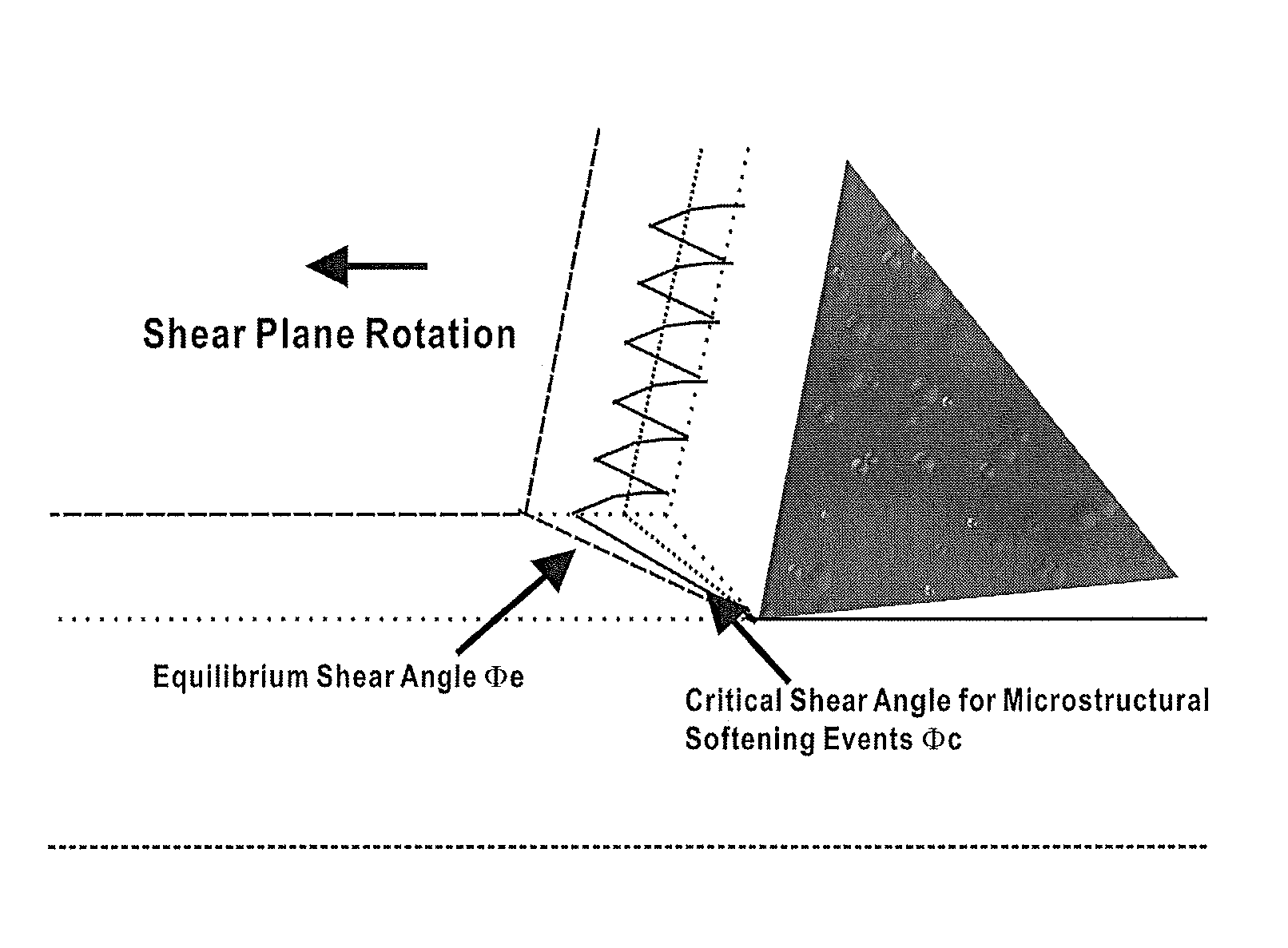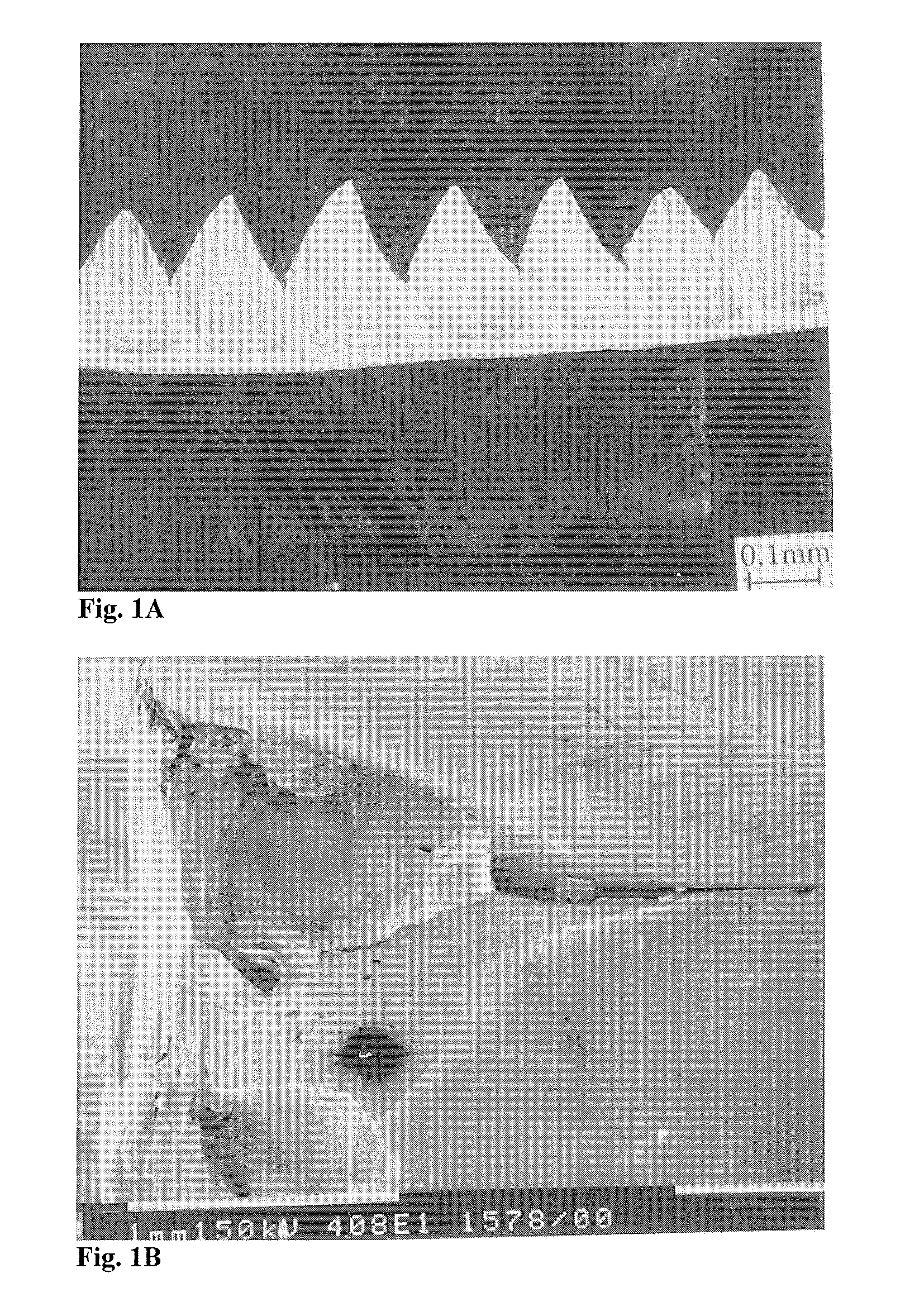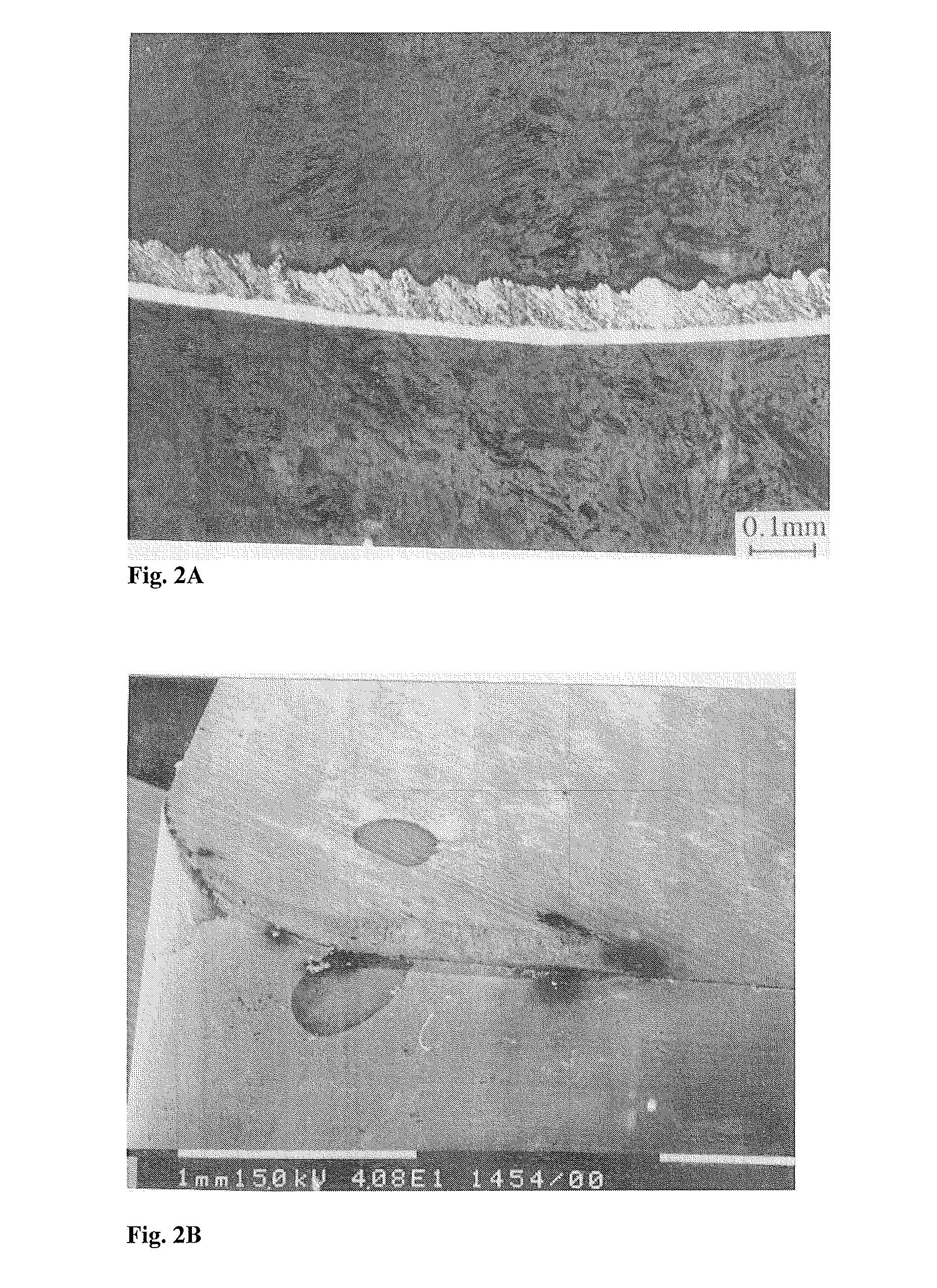Processes for improving tool life and surface finish in high speed machining
a high-speed machining and tool life technology, applied in milling equipment, measurement/indication equipment, turning apparatus, etc., to achieve the effect of suppressing shear localization or chip segmentation, reducing tool-chip contact length sufficiently, and preventing accelerated chemical wear
- Summary
- Abstract
- Description
- Claims
- Application Information
AI Technical Summary
Benefits of technology
Problems solved by technology
Method used
Image
Examples
example 1
[0096]High speed machining of grey cast iron with pearlitic matrix—an example of chip segmentation[0097]Chip morphology obtained in high speed finish machining of gray iron rotors is given in FIG. 12.[0098]Cutting speed=2194 m / min or 36.56 m / s[0099]Feed: 0.15 mm[0100]Critical contact length for segmentation of chip (from micrograph in FIG. 12)=0.1 mm[0101]Minimum chip thickness=0.17 mm[0102]Maximum thickness of chip at the time of segmentation=0.275 mm[0103]Feed / Chip thickness ratio at segmentation=0.15 / 0.275=0.545[0104]The chip velocity decreases with the increase in chip thickness.[0105]The chip velocity starts off at 32.25 m / s and decreases to 19.92 m / s at the time of segmentation.[0106]Critical frequency of chip segmentation based on an average chip velocity of 26(26.08) m / s=26×103 mm / 0.1 mm=260 kHz[0107]Frequency of tool vibration should exceed 260 kHz in order to suppress segmentation of the chip in the primary shear zone. Hence, a tool vibration frequency of 500 kHz is chosen...
example 2
[0110]Quenched and tempered 4340 steel microstructure—an example of hardened steel matrix, exhibiting shear localization characterized by white layer formation. TEM characterisation has revealed that the white layer comprises nanocrystalline grains.[0111]Calculation of frequency of vibration required to suppress shear localization in the primary shear zone in quenched and tempered 4340 steel at a cutting speed of 300 m / min and a feed of 0.05 mm:[0112]The optical metallographic picture of a typical chip obtained from orthogonal cutting of hardened 4340 steel at a cutting speed of 300 m / min and a feed of 0.05 mm is given in FIG. 13.[0113]Critical contact length for shear localization in primary shear zone=60 μm[0114]The maximum thickness of the chip=120 μm[0115]The minimum thickness of the chip=35 μm[0116]The average chip thickness=77.5 μm[0117]The velocity of chip at shear localization=2.08 m / min[0118]The average velocity of the chip=5×(50 / 77.5)=3.225 m / s[0119]Critical frequency of s...
example 3
[0124]Turning of compacted graphite iron at a cutting speed of 800 m / min and feed of 0.1 mm—an example of accelerated chemical wear due to nanocrystalline grain formation due to shear localisation and oxidation wear due to chip segmentation.[0125]An SEM micrograph of a chip from machining compacted graphite iron at a cutting speed of 800 m / min and a feed of 0.1 mm is given in FIG. 14.[0126]Cutting speed of 800 m / min and feed of 0.1 mm are representative of line speed and feed of the cylinder boring operation.[0127]Chip morphology exhibits shear localisation associated with nanocrystalline grains in the primary and secondary shear zone followed by segmentation.[0128]Cutting speed=800 m / min or 13.33 m / s[0129]Feed=0.1 mm[0130]Critical contact length for segmentation of chip=0.05 mm[0131]Minimum chip thickness=0.06 mm[0132]Maximum thickness of chip at the time of segmentation=0.12 mm[0133]The chip velocity decreases with the increase in chip thickness.[0134]The chip velocity starts off ...
PUM
| Property | Measurement | Unit |
|---|---|---|
| vibrational frequency | aaaaa | aaaaa |
| volume fraction | aaaaa | aaaaa |
| grain size | aaaaa | aaaaa |
Abstract
Description
Claims
Application Information
 Login to View More
Login to View More - R&D
- Intellectual Property
- Life Sciences
- Materials
- Tech Scout
- Unparalleled Data Quality
- Higher Quality Content
- 60% Fewer Hallucinations
Browse by: Latest US Patents, China's latest patents, Technical Efficacy Thesaurus, Application Domain, Technology Topic, Popular Technical Reports.
© 2025 PatSnap. All rights reserved.Legal|Privacy policy|Modern Slavery Act Transparency Statement|Sitemap|About US| Contact US: help@patsnap.com



